#gitxsan
Explore tagged Tumblr posts
Text






Moth Bentwood Box
Trevor Husband
224 notes
·
View notes
Text
I am sharing this on behalf of my Gitxsan relatives and family members, please take a look.
I have relatives- Gitxsan relatives- who have stood up for the Wet’suwet’en people in the past. Both our nations are neighbours, and we’ve been allies long before any of my family was born.
And now we, unfortunately, once again get to share the grief and frustration of having a pipeline jammed through our territory and waterways despite our complaints.
I’ve heard from my family firsthand how rough things have been as of late for the rivers; the amount of salmon being caught dropping by the year. My dad goes out hunting once a year to catch a moose that would give us enough meat to last six months. It’s been about 3-4 years in a row now where he’s caught nothing and seen barely any moose. The fact that the surveyors and officials connected with the project have bent legal rules to get the pipeline going faster makes all of this a lot more infuriating.
I know how devastating that social media and the news has been and that more stress is probably something that people would rather avoid, but if you have the time, please consider reading the article in its entirety.
Misiyh.
83 notes
·
View notes
Text

Upcoming community discussion on the invasion of the PRGT pipeline onto Gitxsan territory
26 notes
·
View notes
Text
For when #OwlAwarenessDay falls on #FrogFriday (and #FabricFriday):

Button blanket with owls & frogs c. late 19th - early 20th c. Gitxsan culture (British Columbia, Canada) wool, cotton, shell, graphite 130 cm x 188.5 cm UBC Museum of Anthropology 3051/7
#UBC Museum of Anthropology#frog#frogs#owl#owls#bird#birds#birds in art#Frog Friday#Owl Awareness Day#animal holiday#animals in art#blanket#button blanket#textiles#textile art#Gitxsan art#Pacific Northwest Coast art#Indigenous art#Native American art#First Nations art#Canadian art#19th century art#20th century art
31 notes
·
View notes
Text
Archive Quarterly ~ journal of the west wasn't won archive project. Spring 2025 edition
#aboriginal rights#aboriginal title#Arthur Calder#BCANSI#Bill C-31#Buffalo Jump of the 1980s#Comprehensive Claims Policy#Delgamuukw trial#First Ministers Conference 1985#Gitxsan Wet&039;suwet&039;en#Indigenous Peoples#James Gosnell#Land claims#Methodist Missions North Pacific#Nielsen Report#Nisga&039;a#Non-Status Indian reinstatement#Papers relating to the Northwest Coast Commission 1888#Rejection of Funds
1 note
·
View note
Text



Open today: New exhibition Shaping the Future Through Tradition features video art, animations, short films, and emerging new media pieces by seven Indigenous artists from the Pacific Northwest.
Produced with guest curator Michael Bourquin (Tāłtān/Gitxsan), a filmmaker from Iskut First Nation, this exhibition, on view in the Contemporary Art Gallery in the Northwest Coast Hall, showcases works by artists who are redefining how their stories are told using diverse and contemporary mediums.
Featured artists include:
- Kristi Lane Sinclair, Haida, Cree
- Danika Saunders, Nuxalk, Gwa’sala-Nakwaxda’xw
- Dustin McGladrey, Nisga’a, Grizzly Bear Clan
- Wil Uks Batsga G̱a̱laaw (Jeremy Pahl), Ts’msyen, Laxsgylik (Eagle) Clan of the House of Txat Gwatk
- Kayah George, Tulalip and Tsleil-Waututh Nations
- Wuulhu, Bracken Hanuse Corlett, Wuikinuxv and Klahoose Nations
- Jordan Hill, T’Sou-ke Nation
Learn more here.
290 notes
·
View notes
Text
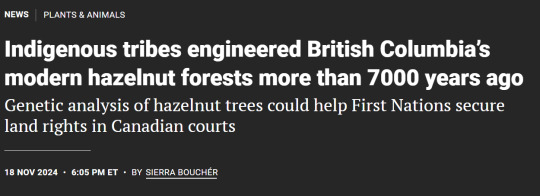
In the misty forests of British Columbia, the fuzzy leaves and pointed husks of beaked hazelnuts (Corylus cornuta) can cover the floors of entire valleys. This wild plant, whose seedlings proliferate after a fire, served as a vital food source of many of the region’s Indigenous people, who tended it with prescribed burns. Despite this, the Western ideology that dominates Canadian laws has often considered Indigenous people’s impact on some of this land to be trivial, and so discounts their land rights. Now, a genetic analysis of these hazelnuts published today in the Proceedings of the National Academy of Sciences suggests Indigenous people of British Columbia actively cultivated this crop, deliberately transporting beaked hazelnuts across nearly 800 kilometers to cultivate the nutritious and reliable food source in new regions. The trees’ modern diversity and widespread coverage is a result of these ancient efforts, the researchers report. The findings could bolster First Nations tribes’ legal claims to their traditional lands. The research “provides just a really solid case study in how nondomesticated plants … are manipulated and used in many of the same ways that domesticated plants are,” says environmental archaeologist John Marston of Boston University, who was not involved with the study. “We just don’t have a lot of good examples of that going back into deep time.” Oral histories and traditions surrounding the beaked hazelnuts abound in the Kalapuya, Skokomish, Nlaka’pamux, and Gitxsan communities of British Columbia. Chelsey Geralda Armstrong of Simon Fraser University and colleagues wondered whether the plants’ genes echoed those stories. “We wanted to see if there was a genetic signature of that on the landscape,” she says. “We found that there absolutely is.”
18 November 2024
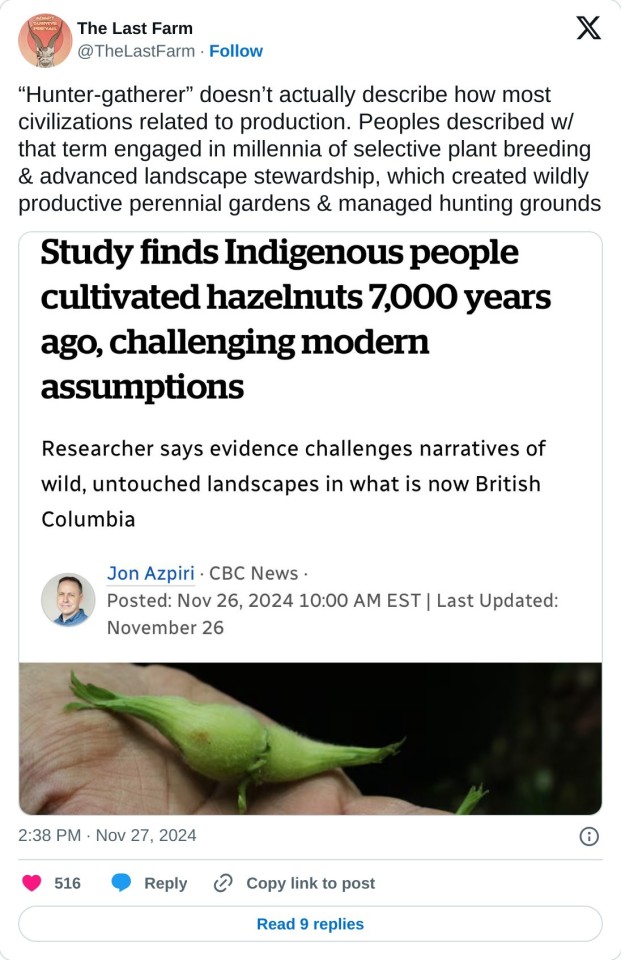
233 notes
·
View notes
Text
Canada, Truth & Reconciliation, & Indigenous Games
Hello friends,
Today (September 30th) is the National Day of Truth & Reconciliation in Canada. It is a very recent holiday in this country, and it’s also very important to me. I want to spend some time today telling you about it, and then (since this is a ttrpg blog) directing you to some indigenous storytellers and designers that deserve a spotlight for various reasons.
I am not Indigenous. This information is a collection of knowledge that I have gained through university coursework, personal research I've undertaken, and relationships I've cultivated with indigenous friends who have taken pains to educate me and highlight how these issues have personally affected them. I am aware that the summary I'm providing is incomplete, and there may be elements that I don't fully understand the implications of.
If you are Indigenous, please keep in mind that this post may recall some painful and personal moments of history for you. Proceed with caution. The shout-outs to indigenous creators can be found after the heading “The Storytellers.”
The Truth.
Canada has been engaged in a cultural genocide of its indigenous peoples since European settlers started the colonization of the country. This genocide had many avenues, including the creation of the Indian Act, the relocation of many Indigenous peoples to restricted Reserves, and a disturbing trend of missing and murdered Indigenous women. For the purposes of today however, I’m going to stick to just talking about Residential Schools, and the impact they had on Indigenous families and their children.
Residential schools were designed to “kill the Indian” and “save the child”, in the words of John A Macdonald, the prime minister who authorized their creation. They were designed to sever Indigenous children from their culture and raise them in a Christian, colonial context. These residential schools were harsh, forbidding Indigenous children to speak their mother tongues, cutting their hair, and forcing them to learn skills considered “useful”, in the language of the colonizer, away from their parents. The schools were also hotbeds of abuse. Alarming numbers of children fell ill and died at these schools - the death toll to this day is unknown. From April 1, 1920 to some time in the 1990’s, residential school attendance was mandatory for Indigenous children from the ages of 7 to 16.
The Sixties’ Scoop is a reference to a mass kidnapping of Indigenous children in the 1950’s and 60’s, who were forcibly removed from their homes and “adopted” into non-Indigenous families. While the last residential school in Canada closed in 1997, Indigenous children still make up over 50% of all children in private foster care, despite only accounting for just over 7% of all children under age 15 in Canada.
The Reconciliation.
Reconciliation is a goal prompted by Indigenous groups and elders. It is a choice that promotes "balance and harmony," a way of life that encourages coexistence, according to the words of one residential school survivor, Hereditary Chief, Dr. Robert Joseph.
In 2007, The Indian Residential Schools Settlement came into effect, offering compensation to survivors of many residential schools.
In 2008, the Truth and Reconciliation Commission of Canada was officially launched, intended to be a guide for the Canadian government to help establish lasting reconciliation. This commission was a way to formalize a method of collecting data, and it also had the responsibility of developing a list of recommendations for the country of Canada to follow, in the goal of pursuing a relationship between the Indigenous peoples of Canada and the government of Canada.
In 2007, Cindy Blackstock, a First Nations (Gitxsan) activist launched a court case against the Canadian government, for under-funding social services provided to children living on First Nations reservations. This was in regards to Jordan’s Principle, a child-first Canadian policy that is meant to ensure that First Nations children have equal access to all government funded public services as other Canadian children. The Truth and Reconciliation Commission made the respect of Jordan’s Principle one of its 94 Calls to Action for the Canadian government.
The Canadian Human Rights Tribunal became involved in 2016, when they found more alleged breaches of the Canadian Human Rights Act in regards to Jordan’s Principle. As of September this year, the Federal Government is still attempting to dismiss human rights complaints regarding the use (or, in fact, neglect) of Jordan’s Principle.
Canada’s history of residential schools and use of the foster care system has grievously wounded Indigenous families and children. The disruption of family life and the forcible removal of children from their culture has created legacies of loneliness, pain, and suicide. Indigenous people today can trace their own familial wounds to the legacy of residential schools and the lack of resources provided to them from the government. The National Day of Truth and Reconciliation is a day to remember this legacy and provide a space for education, but it isn’t enough.
You can learn more about this day and the history behind it by visiting the National Centre for Truth and Reconciliation Website.
You can also watch this 18-minute Youtube video about Residential Schools, or We Can’t Make the Same Mistake Twice, a free 2 & 1/2 hour documentary about Blackstock's continuous fight regarding caring for children using Jordan’s Principle.
I also recommend 21 Things You May Not Know About The Indian Act, by Mary-Ellen Kelm and Keith D. Smith, which breaks down some of the key elements of the Indian Act for everyday person.
So, how do we connect this to ttrpgs?
When it comes to the milestones that have been achieved in Canadian history, those milestones have been made because we listened to Indigenous voices. The recommendations made by the Truth and Reconciliation Commission that have been followed are having real and positive effects for Indigenous peoples in Canada. Listening to the stories of Residential School survivors has been integral to the processes recommended and undertaken by the Canadian government.
We need Indigenous stories. We need Indigenous storytellers.
The Storytellers
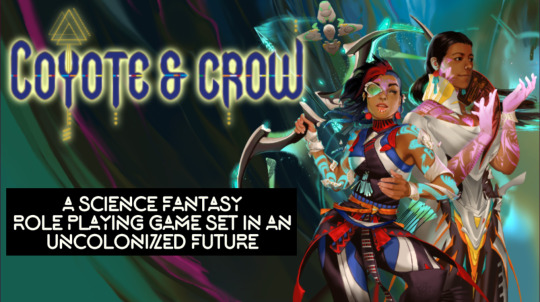

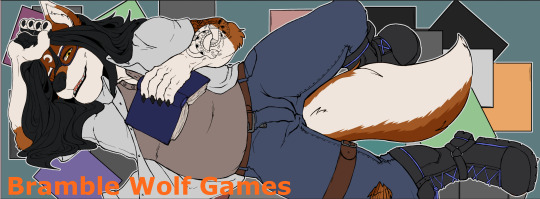
Coyote & Crow.
Coyote & Crow Games is a tabletop games publisher, primarily focused on the tabletop roleplaying game, Coyote & Crow. This is a world and game whose design team is fully Indigenous, from various First Nations people groups across North America. Coyote & Crow is a futuristic game about a land untouched by colonization, a land changed by a series of climate events that have changed the geographical and social landscape. It involves supernatural powers, a completely unique form of civil organization, and a unique d12 dice pool system
In a recent update, Connor Alexander, as the face of Coyote & Crow, announced some business decisions that include a creation of a consultant branch of the company, to provide professional consultation services for other creative endeavours that are looking to include Indigenous Representation in games.
What I love most about Coyote and Crow is that it’s a world where Indigenous creators have been given full reign over the ways they are represented in the fiction, and it provides a unique social and political imagining of society that pulls from many First Nations cultures. It’s refreshing, it’s exciting, and it provides a lot of guidance for non-Indigenous players so that they can engage with the world in a way that’s respectful.
Wendigo Workshop
This is a small team based in Quebec, Canada. I’m not entirely sure whether the team is fully Indigenous, but there are Indigenous creators as part of the team.
Currently the Workshop is working on a number of different games, including… Anomaly Hunters; a monster hunting ttrpg built on the Breathless SRD. Arkelon Chronicles; a science-fantasy ttrpg surrounding the discovery of an Alien ruin. Last Hope; a Caltrop Core game about magical girls fighting to protect the world while balancing their student lives.
Bramble Wolf Games
@sahonithereadwolf is an Indigenous creator based in Appalachia looking to make games that mean something. I found out about him through his game Exceptionals, a game about community, activism and kinetic eye beams. It’s inspired heavily by X-Men, but instead of telling superhero stories, it’s more about the fostering of a community outside of the systems created and enforced by colonial governments.
Sahoni is also currently working on a game called Protect the Sacred, a game inspired by Indiana Jones, but focused on the protection and preservation of monsters and artifacts in the interests of the cultures that have been stolen from by colonial powers. The game is about your relationship to your culture, and resistance to fascism - and you can get sneak peeks to this game through Sahoni’s Patreon.
Both Protect the Sacred and Exceptionals involve character creation that requires players to answer questions about who they are, what they do, and how they affect the community around them. They both recognize the community around you as integral to your success, and I think that this point of view is such an important concept to consider when using games as an art form that can expand your social imagination.
Also...
There is a consultancy service in Alberta, Canada called Pe Matawe Consulting, which is not focused specifically on ttrpgs, but does provide consulting for various creative endeavours. They provide consulting services as well as workshops, with the goal of providing a broader understanding of Indigenous culture and folklore.
164 notes
·
View notes
Text
The force also used “lethal-force overwatch” — snipers armed with rifles — during the high-profile enforcement, according to officers with a specialized RCMP response team meant to resolve high-risk situations.
The revelations came as RCMP witnesses began testifying at a hearing on the Nov. 19, 2021, police response to Indigenous land defenders who had occupied two small structures along the Coastal GasLink pipeline route. The hearing follows Justice Michael Tammen’s verdict, Friday, that there is sufficient evidence to convict three people charged during the raid with criminal contempt of court.
Immediately following the decision, Tammen moved to consider an application to dismiss the charges based on police conduct during the arrests. The defendants say they experienced “widespread Charter violations stemming from police misconduct” and “disproportionate and excessive use of force,” according to a statement issued by members of the Gidimt’en Clan.
Among those arrested inside a “tiny house” located next to the pipeline route was Sleydo’, who also goes by Molly Wickham. A prominent figure in the Wet’suwet’en First Nation’s years-long opposition to the project, Sleydo’ was arrested along with Shaylynn Sampson, who is Gitxsan, and several others, including two journalists. One of the journalists, Amber Bracken, is now suing the RCMP over her arrest and detention.
62 notes
·
View notes
Text

Killerwhale with Human and Dorsal Fin
Trevor Husband
166 notes
·
View notes
Text
Arthur Morgan: born too late for the golden age of the west, born too early for modern healthcare, BUT was born just in time to hypothetically head up to a little area in British Columbia and kill Father Adrien-Gabriel Morice

#shitpost comprehensible to Wet’suwet’en and Gitxsan ppl only#and maybe those who know indigenous history of bc too#Arthur morgan#rdr2#telekitnetic's silly mind box#this would be like truth and reconciliation and healing 2 me
20 notes
·
View notes
Text
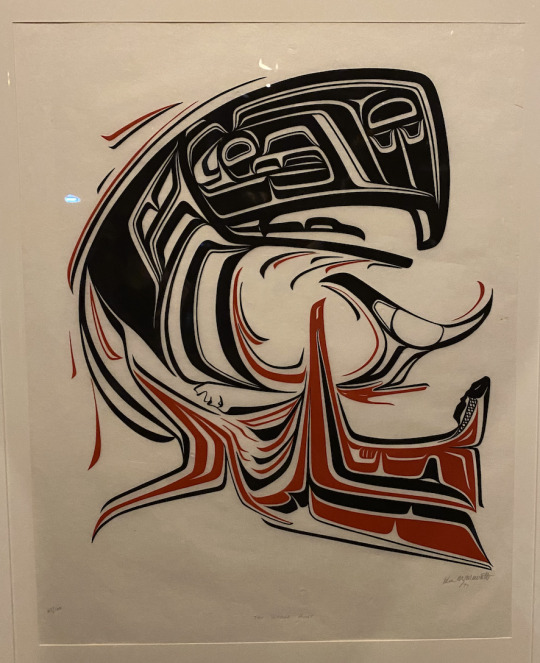
"the whale hunt" screenprint by ken mowatt, Gitxsan
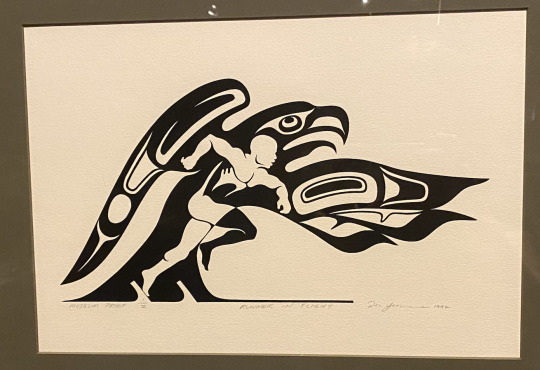
"runner in flight" screenprint by don yeomans, Haida
the art of the pacific northwest translates so well to screenprints
58 notes
·
View notes
Text
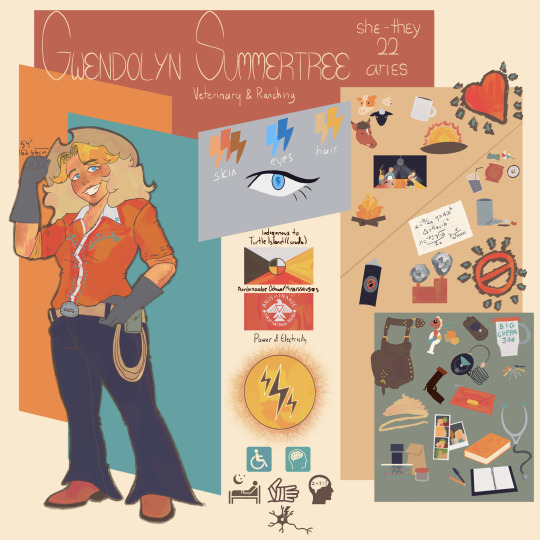
╰┈➤ ❝ [Gwendolyn "Gwen(die)" Summertree] ❞
⚡︎⚡︎ She/They ⚡︎⚡︎ 22 ⚡︎⚡︎ Aries ⚡︎⚡︎
Veterinarian & Ranching Student
Caretaker of The Mirror
"Work hard and feel good about it!"
༻༺┅━━━━━━┅୨୧┅━━━━━━┅༻༺
Gwendolyn Summertree, commonly referred to as Gwen or Gwendie, is a veterinary student at Casus College of International Arts, and runs a sanctuary and petting zoo on her aunts property.
╰┈➤[≈] Description
What is Gwen Summertree's physical appearance?
Gwen is 5 feet 4 inches, or 162.56 centimeters. Her skin is a light tan with very warm undertone, sunburns on her nose and cheeks. Her hair is thick, wavy, and layered with a lot of frizz and whisps. She has a curvy and muscley build, accentuated by her work in the fields. She has a normal skin type, decorated with dark brown freckles all over her forehead, cheeks, and nose. She has fractal scarring on her face over her right eye, left of her chin, and over her lip. The scarring goes down her right shoulder, curves mid back down her left hip, and all the way to the heel of her left foot. She has stretchmarks over her stomach from her pregnancy, and a cesarean scar along the underside of her belly. Prior to entering the Mirror World, her original hair colour was brown, bleached as light as it could go. Her eyes were also brown, but lost pigment due being struck by lightning, turning them a bright blue. After entering the Mirror World, her bangs took on a bright yellow. The pupils of her eyes became dark blue lightning bolts (⚡︎), referencing her power and past experience.
What is Gwen Summertree's background and history?
Gwen was born in Hiawatha Native Reserve, Ontario, moving to Toronto at a very young age when her father got a job working for the Government of Canada. All she knows is city life - concrete, big buildings, and smog are what truly remind her of home. Growing up she was a dedicated horse girl, looking at any media that involved horses and ponies. She dreamed of living in the countryside and owning farm animals, being a cowpoke just like the people in her favourite TV shows.` In high school she was a cheerleader and part of the student body, being very popular among her peers. She met her husband, Zenibaa, in school, being high school sweethearts throughout its entirety. Immediately after graduation they eloped and had a child, being a sickeningly sweet couple. After visiting some family in Hiawatha, an accident occurred on the way to Toronto, causing the passing of her husband. The trauma was excruciating on Gwen, and to get away from the memories and help her daughter grow up somewhere with nature they moved to Casus on a whim, knowing distant family lived there. Now she lives on a beautiful ranch taking care of her aunts horses and farm animals, raises her daughter, and trying to make the best of what she has.
Who is Gwen Summertree related to? Who is her family?
Gwen lives with her aunts, Andréa Laliberte and Biskane Summertree. The Summertree family has lived in British Columbia for generations, being indigenous to the area. A branch of Summertree's moved to Ontario about a hundred years ago, creating a blended indigenous family of Anishinaabe and Gitxsan peoples. She had never been to Casus, but is connected there very distantly. Her late husband was Zenibaa Cardinal, her high school sweetheart and love of her life until his untimely passing at the age of 20. Gwen also has a daughter named Judith-Namid, a three year old girl who is surprisingly stoic for her age.
What sort of activities does Gwendolyn Summertree like?
Gwen loves to party, finding a lot of her joy on the dancefloor. She isn't too focused on the inebration aspect of partying, mostly looking for excuses to show off her moves and outfits. These days she doesn't go out much, preferring to stay at home with her family and animals. She also likes to volunteer her time at organizations and nonprofits, making the lives of others better and more comfortable. Thought she isn't too good at it, she picked up the banjo as a way to pass the time and finds a lot of enjoyment in playing for her friends. When all her work on the ranch is done, she rides her horse Thistle around the town and surprising businesses or restaurants by arriving on horseback. Being around animals makes her the most comfortable, so she tends to sit with them in the stables or fields.
What kind of traits, ticks, or behaviours does Gwen Summertree exhibit?
Gwen is a tough, selfless, and sweet woman, always putting community first. She will always put herself in front of issues to try and soften the blow for anyone involved, even if it hurts her dearly. She takes on so many duties and responsibilities to try and make up for the failures of her past, in a way helping the community as a form of punishment. As fun and jovial as she is, she takes doing a good job very seriously. If there is a task, she will complete it and do it as perfectly as possible to make sure things run smoothly.
What does Gwen Summertree want? What prevents her from achieving that goal?
Gwen wants peace, to live for herself and her family. Moving to the country helped a little bit and having a way to save people in The Mirror World gave her a sense of purpose. The thing that stops her the most is her own trauma regarding her late husband. Every day, she fears hurting her loved ones, or not being there to support them. If she is gone just one day to take care of herself, how will she know if everyone else is okay? The fear of not being perfect paralyzes her.
How does Gwen Summertree interact with her surroundings?
Gwen is always respectful of other peoples spaces and items, but has the tendency to be stronger than she thinks - this could mean bumping into someone and knocking them to the ground, or going to pick up a heavy box and easily slinging it over her shoulder. She sees beauty and life in every little object and person in the world, trying to see good in everything to keep her spirits up. She pets every willing animal she meets, cleans up other peoples messes, and volunteers her time to those in need. Sometimes her kindness is to a fault, often neglecting herself in order to support everyone else around her, even if it accidentally hurts her.
What do outsiders think of Gwen Summertree? How does she treat them?
Everyone in Casus knows Gwen is an absolute sweetheart, always helping her neighbours and local community. Cheap entries to the petting zoo, bringing food and materials to new residents of the town, and acting as an unofficial guide to the Casus History Museum - where her aunt Andréa works - she is the number one source of support in the whole valley. Despite her positivity, members of the Church of Doluit Deam do not appreciate the work she does, often seeing her as 'radical' and 'unruly', claiming the museum spreads misinformation and she is a perpetrator. There has been a lot of tension between the Summertree Family and those who practice Doluitism, and when Gwen moved to Casus, she was caught in the crossfire.
What do Gwen Summertree's friends think of her? How does she treat them?

Yhat: "What an absolute fucking gem! She has got to be the strongest person I know. She sacrifices so much to make sure her family and friends are safe, I wish I had an ounce of care she has. I'm lucky to have her as my best friend. Not only is she helpful, but damn does she know how to party! Surprises me every day that Judith is her daughter - she barely cracks a smile, while Gwen is all smiles!"

Archie: "Strong, loyal, fierce, amazing, beautiful... what isn't she? She is the person you go to for advice, to have a shoulder to cry on, to share stories and secrets. And the way she treats kids and animals; it's so obvious she pours her heart and soul into ensuring their happiness and comfort. I wonder if one day someone can do the same for her...maybe I could...? Nah, no way,"
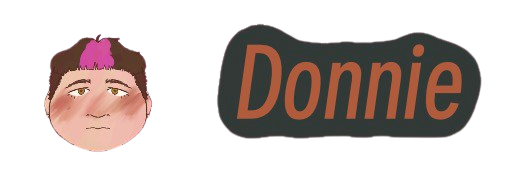
Donnie: "Honestly, I don't know much about her. She is best friends with Yhat, so I see her often and we talk a little outside of acting as Protectors. She seems really nice and I'm happy to connect with her, but it kind of feels like she tries way too hard to make people happy? Does she really need my approval? Oh... that sounds so mean... forget I said anything,"

Dusk: "She is a great friend to have. In this little town it's hard to find someone who cares about health and protecting the public as I do, so we really mesh well both in the Mirror World and daily life. She doesn't work out like I do, but she can for sure rival me in an arm wrestling contest. All the hay bales she throws, the buckets and boxes she moves, the running around she does - she might end up stronger than me! If she joined me at the gym more..."

Quill: 🤠🐴💃
╰┈➤[🖑] Identity
Gwen Summertree is Anishinaabeg, her father being Odawa Anishinaabeg and her mother being Mississaugas Anishinaabeg with distant Gitxsan heritage. She lives off-reserve with her aunts Biskane Summertree and Andréa Laliberte in Casus Vallis, British Columbia.
Gwen Summertree is a bisexual, cisgender demigirl.
༻༺┅━━━━━━┅୨୧┅━━━━━━┅༻༺
╰┈➤[❤] Likes
Farm animals (especially horses!)
Coffee
A peaceful sunrise
Dancing, clubbing
Campfires
╰┈➤[⊘] Dislikes
Sweets and desserts
Littering and trash
Difficult math questions
Pollution and factory made products
Pesticides, insecticide, herbicides
༻༺┅━━━━━━┅୨୧┅━━━━━━┅༻༺
╰┈➤[𐙚] Backpack
Baby toys
Crummy flip phone
'Big Cuppa Joe'
Portable CD player
Several miscellaneous keys
Fancy wallet
Sleep darts
Hemp rope
Stethoscope
Textbook(s)
Workbook
A single pen, a single pencil
Hearty lunch
༻༺┅━━━━━━┅୨୧┅━━━━━━┅༻༺
╰┈➤[☀] Powers
How does Gwen Summertree's power manifest?
Upon tapping into the Mirror World, Gwen Summertree discovered her powers of Electricity, Shocks, and Lightning. This power likely stems from the incident involving her late husband several years ago, in which she was electrocuted during a storm.
How did Gwen Summertree discover the Mirror World?
Gwen discovered the Mirror World after her friend, Yhat, asked to show her something. They both went to explore, but Gwen got stuck because she did not read the Casus Vallis Historia. Yhat then had to save her and discovers without reading the book, everyone is trapped. Neither of them realized just how dangerous the Mirror World was until that moment.
What influences Gwen Summertree to protect the public and go through The Mirror World?
Keeping her family safe and away from dangers is and always will be her main goal. There are a lot of people who go missing in Casus, and now that she knows most end up in The Mirror World, she vows to close it off and prevent any more suffering. In a way, going to The Mirror World is an act of redemption and punishment for Gwen, since she feels responsible for her late husbands passing.
╰┈➤[♿︎] Health & Conditions
Traumatic Brain Injury from being struck by Lightning
Chronic Pain from being struck by Lightning
Post-Traumatic Stress Disorder
Insomnia
Dyscalculia
#casus vallis#casus vallis: the protectors#artwork#art#ocs#story#writing#oc#my artwork#casus vallis: gwen#worldbuilding#Spotify
5 notes
·
View notes
Text
For #WorldOrcaDay:

Robert E. Sebastian (Gitxsan, b.1952)
The Herd - Killer Whale, 1985
silkscreen, #81/100, 14 7/8 x 21 3/4 in. (37.78 x 55.25 cm)
#animals in art#animal holiday#20th century art#print#silkscreen#orca#orcas#killer whale#killer whales#whale#whales#cetaceans#sea mammals#First Nations art#Canadian art#Native American art#Indigenous art#Pacific Northwest Coast art#modern art#World Orca Day#1980s#Robert E. Sebastian
60 notes
·
View notes
Text
RWBY Ethnicity headcanons because why not!
Tyrian Callows - Lebanese, I mean his name comes from the Lebanese city of Tyre and that makes sense.
Coco Adel - Belgian, I mean she just gives me Belgian energy idk why
Weiss Schnee + The Entire Schnee Family - Swiss-German, it makes sense, okay like Jacques has a French name and in Switzerland the main languages are French, German & Italian.
Nora Valkyrie - Norwegian, its basically canon
Oscar Pine - Moroccan & Bedouin + Scottish & Irish, I totally think he's Maghrebi like YOU CANNOT CHANGE MY MIND OKAY.
Professor Port - Hate that man, literally identical to my Bio Teacher, probably German because my Bio Teacher was German.
Mercury Black - Scottish-American, he just is.
Trivia "Neopolitan" Vanille - Neapolitan & Corsican
Roman Torchwick - Sicilian
The Belladonnas - Its of course canon that they are Indigenous, Ghira is on Chief & Council, need I say more? Anyways I have a feeling they would be from the Pacific Northwest, more specifically they would be Gitxsan.
Hazel Rainart - German + Assyrian, he kinda reminds me of the Sumerian folk hero Gilgamesh who stems from what is now Modern day Iraq.
Emerald Sustrai - Basque + Sudanese & Arab, her surname is basque, her allusion is Ali Baba/Aladdin and she seems to be of african descent as well so honestly she could be Basque, Sudanese and Arab.
Elm Ederne - Afro-Dominican + Mongolian, need I say more.
Vine Zeki - Tibetan + Japanese, Need I say more.
Harriet Bree, Afro-Jamaican + Cambodian, its my headcanon.
Marrow Amin - Paternally Ethiopian & Ugandan, Maternally Indigenous Australian & Greenlandic, his surname "Amin" is of Arabic origin but is prevalent in Uganda as a couple of my Ugandan friends from 9th grade had that exact surname, also his weapon being a boomerang could point to him being Indigenous Australian {Also the Faunus being very clearly Indigenous} & Greenlandic.
Clover Ebi - Turkish, that man is Turkish, okay? HES TURKISH TO ME.
Qrow & Raven Branwen - Welsh & Breton, need I say more.
Sage Ayana - Yoruba, one of my Nigerian friends presented me with this headcanon and now I hold onto it dearly.
#rwby#rwby headcanons#tyrian callows#coco adel#weiss schnee#willow schnee#winter schnee#whitley schnee#jacques schnee#nora valkyrie#oscar pine#professor port#mercury black#neo#neo rwby#roman torchwick#blake belladonna#kali belladonna#ghira belladonna#hazel rainart#emerald sustrai#ace ops#elm ederne#vine zeki#harriet bree#marrow amin#Clover ebi#qrow branwen#raven branwen#sage ayana
23 notes
·
View notes
Text
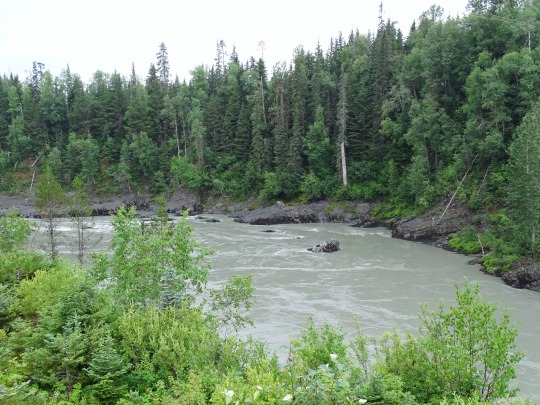







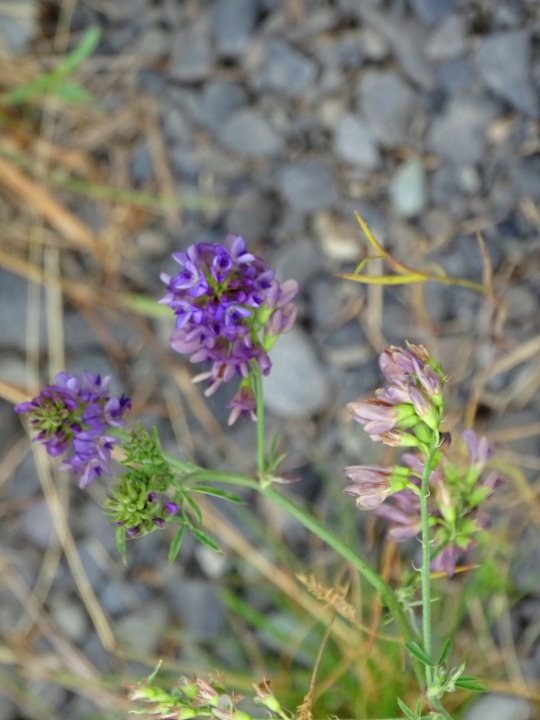

Nass River, BC (No. 1)
The Nass River is a river in northern British Columbia, Canada. It flows 380 km (240 mi) from the Coast Mountains southwest to Nass Bay, a sidewater of Portland Inlet, which connects to the North Pacific Ocean via the Dixon Entrance. Nass Bay joins Portland Inlet just south of Observatory Inlet.
The English name "Nass" is derived from the Tlingit name Naas which means "intestines" or "guts" in reference to the river's large food capacity in its fish (Naish & Story 1963; Leer, Hitch, & Ritter 2001). Can also be a Tlingit word for "food depot". Former spellings are Naas and Nasse. The Nisga'a name for the river is K'alii Aksim Lisims "Lisims (river name) Valley". The Gitxsan name is Git-Txaemsim meaning People of Txeemsim (Raven or Trickster); Xsitxemsem in the dialect of the Gitanyow). Lisims means "murky" in Nisga'a, referring to the river's silt-laden flow.
Source: Wikipedia
#Nass River#Nass Camp#Nass River Bridge#Alfalfa#travel#original photography#vacation#tourist attraction#landmark#landscape#BC#wildflower#Nisga’a Nation#flora#nature#countryside#woods#forest#summer 2023#British Columbia#Canada#engineering
15 notes
·
View notes